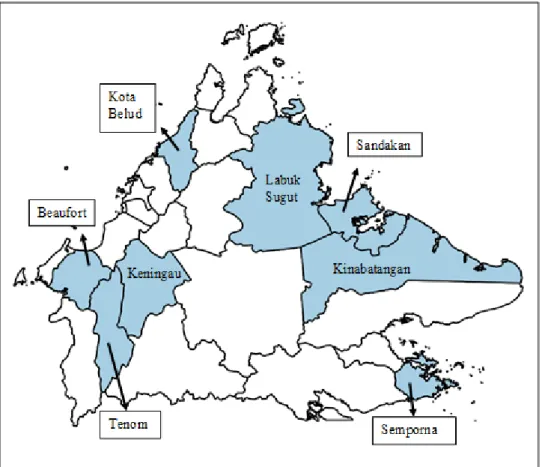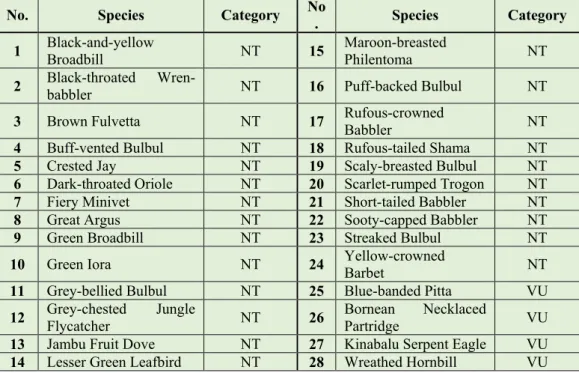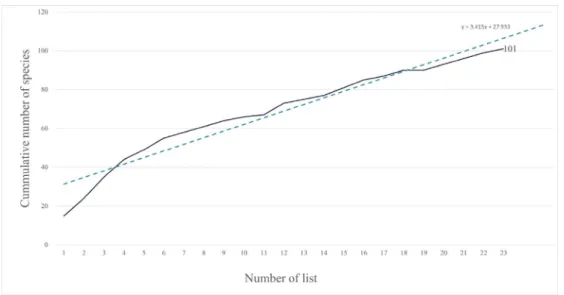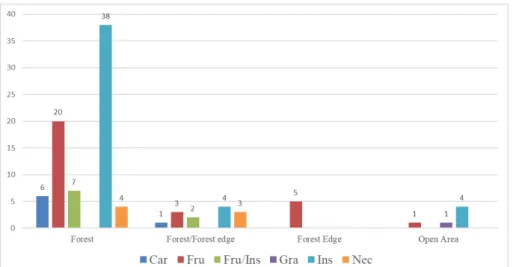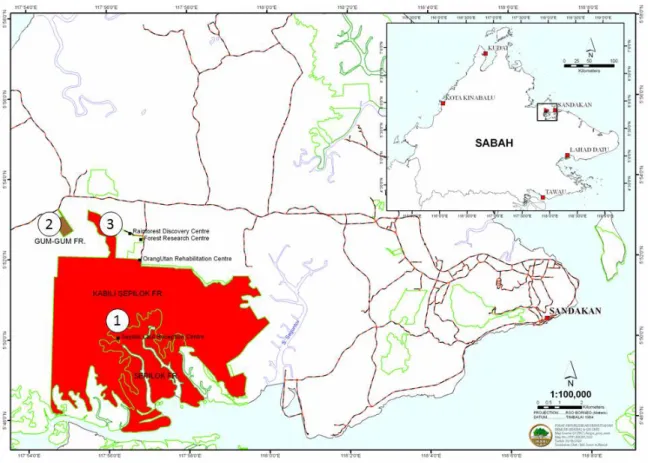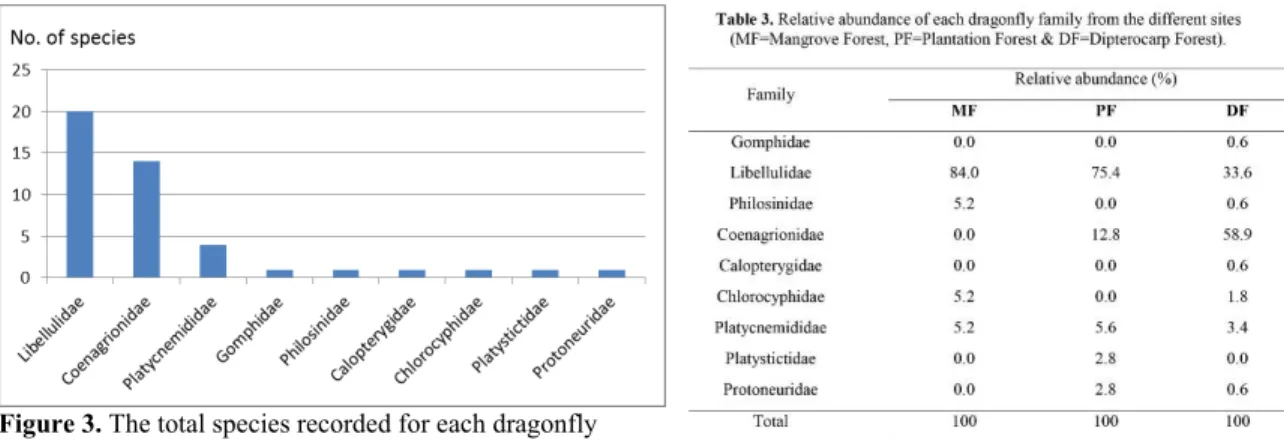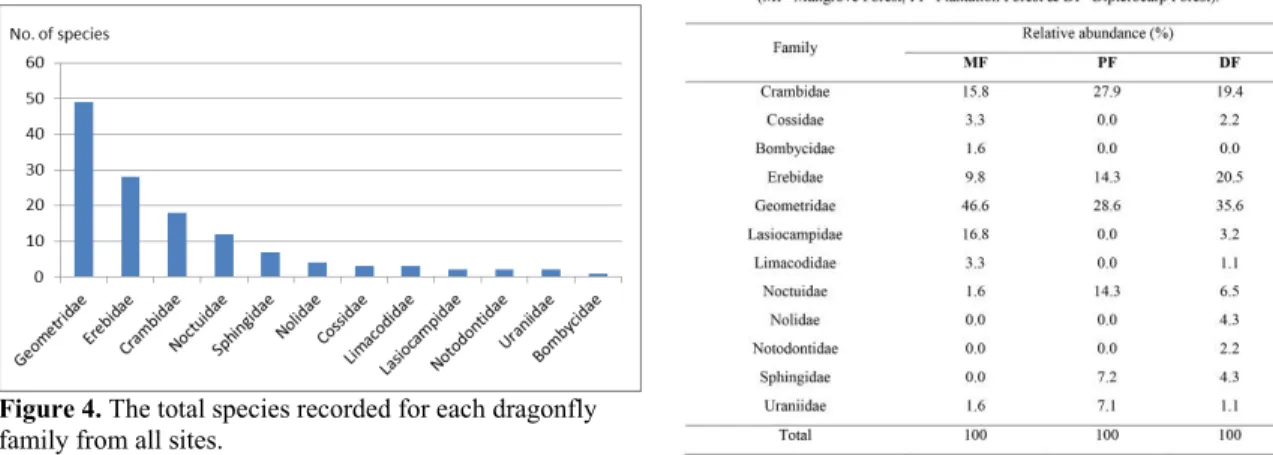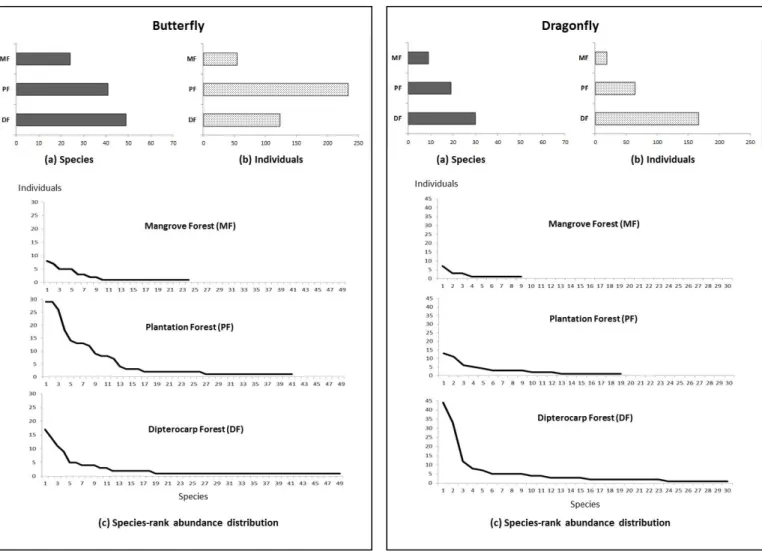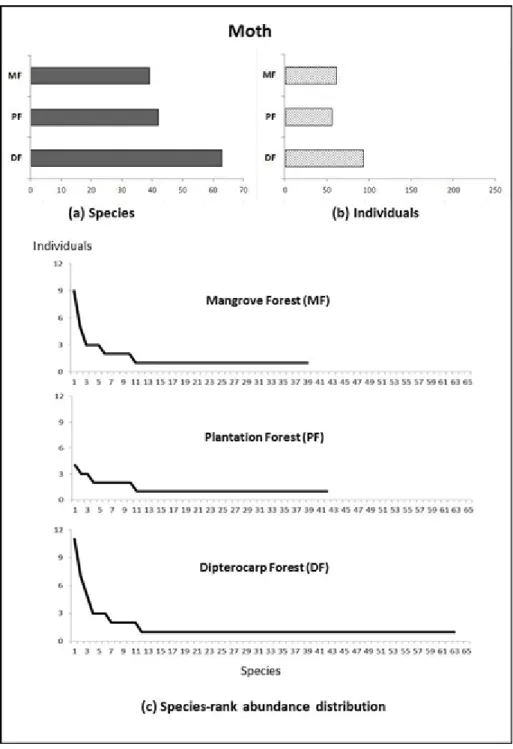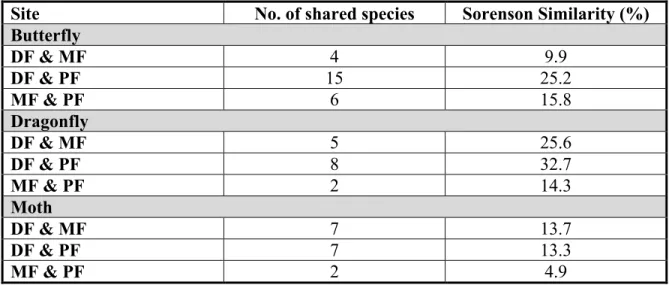Articles published in the Sepilok Bulletin do not necessarily reflect the opinion of the Sabah Forestry Department. The expedition was organized by the Forest Research Centre, Sabah Forestry Department, under the auspices of the Heart of Borneo Initiative. The main objective of this study is to provide a brief description of the bird species and ecology found in the forest reserve to support future forest management initiatives.
In addition, the number of individuals of the species observed within each list was recorded. Our appreciation also goes to the research officers and staff of the Forest Research Center who organized the Mensalong Forest Reserve Scientific Expedition.
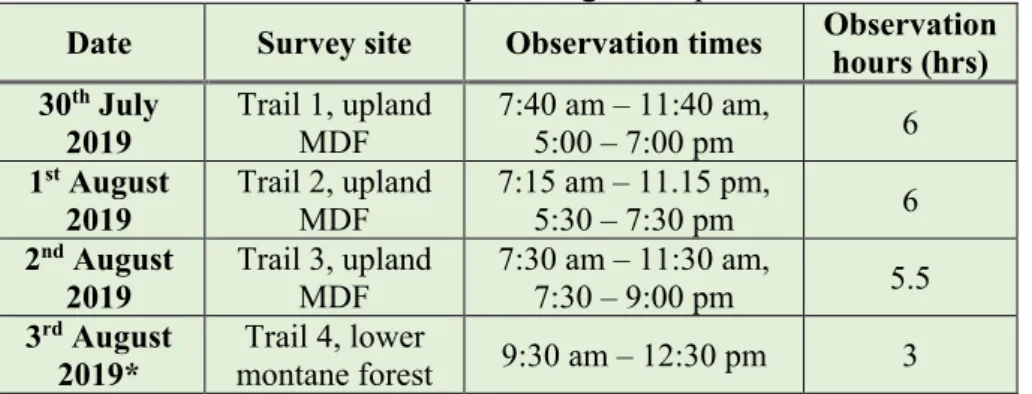
Comparison of insect assemblages (butterfly, dragonfly and moth) in different lowland forest types in Sabah, Malaysia
Checklist and relative abundance of butterfly species in three forest types (MF=Mangrove Forest, PF=Plantation Forest & DF=Dipterocarp Forest)
Checklist and relative abundance of dragonfly species in three forest types (MF=Mangrove Forest, PF=Plantation Forest & DF=Dipterocarp Forest)
Checklist and relative abundance of dragonfly species in three forest types (MF=Mangrove Forest, PF=Plantation Forest & DF=Dipterocarp Forest). Checklist and relative abundance of moth species in three forest types (MF=Mangrove Forest, PF=Plantation Forest & DF=Dipterocarp Forest).
Checklist and relative abundance of moth species in three forest types (MF=Mangrove Forest, PF=Plantation Forest & DF=Dipterocarp Forest)
An illustrated preliminary checklist of inland fishes from the Kabili-Sepilok Forest Reserve, Sandakan, Sabah
All specimens collected were deposited at the Forest Research Center (FRC), Sabah, Malaysia; and the Zoological Reference Collection (ZRC) at the Lee Kong Chian Museum of Natural History, National University of Singapore, Singapore. This species lives in slow-moving waters and spends most of its time hiding among submerged foliage. Nevertheless, a longer sampling period may reveal more species, especially members of the Gobiidae family, as this species is common in muddy mangroves.
The presence of the catadromous species Anguilla borneensis in KSFR provides evidence that the streams are connected to the sea. Future sampling in the area, taking into account the wet season, could potentially reveal more species, especially members of the family Gobiidae. To maintain the richness of the aquatic ecosystem, continuous monitoring of the area is necessary.
Ti Estados Unidos a Opisina ti Panagkalap a barko ti singaw nga "Albatross" Ti kinanadumaduma a panagiladawan ti ichthyofaunal a panagtitipon ti Batu Timbang, Lugar ti Konserbasion ti Kanyon ti Imbak, Sabah, Malaysia. Washington D.C.: Sangalubongan a Banko Washington, DC. 2012) Conspectus cobitidum: maysa nga imbentaryo dagiti loaches ti lubong (Teleostei: Cypriniformes: Cobitoidea).
A catalog and core bibliography of the fishes known to occur in freshwater, mangroves and estuaries. Review: A working checklist of freshwater fish diversity for habitat management and conservation in Sabah, Malaysia, North Borneo. Fishes from the Brantian drainage, Sabah, Malaysia, with description of a new Rasbora species (Teleostei: Cyprinidae).
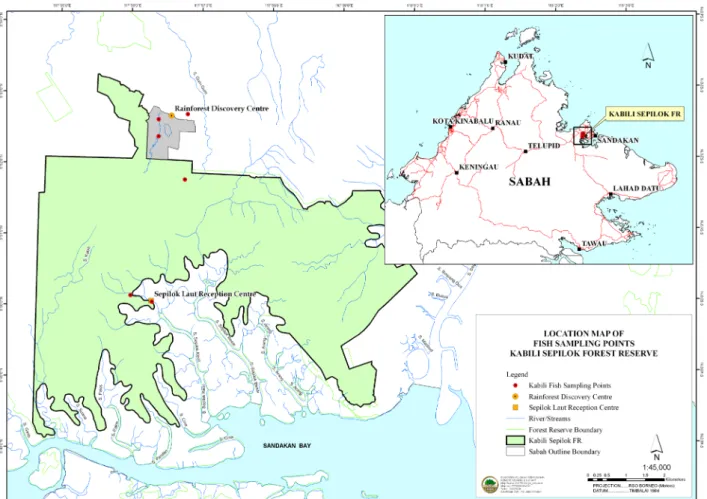
Checklist of fishes from Kabili-Sepilok Forest Reserve, Sabah, Malaysia
Preliminary anuran checklist of Kabili-Sepilok Forest Reserve, Sabah
- Family: Dicroglossidae (E= Endemic, NT= Near Threatened, LC= Least Concern)
- Family: Mycrohylidae (E= Endemic, LC= Least Concern, NE= Not Evaluated)
- Family: Ranidae (E= Endemic, LC= Least Concern, NE= Not Evaluated)
- Family: Megophryidae (left), Bufonidae (right) (E= Endemic, LC= Least Concern)
- Family: Rhacophoridae ((E= Endemic, NT= Near Threatened, LC= Least Concern)
The objectives of this study were to prepare a checklist of anurans in the Kabili-Sepilok FR, to provide useful baseline information for building future studies on anurans in the area, and to contribute to our current knowledge of anuran diversity and distribution in Sabah. Determining anuran diversity in small forested areas is paramount to ensuring the protection of forest patches that may not support large mammal populations but may serve as valuable areas of anuran diversity in disturbed landscapes. A 10-day sampling was conducted in October and November 2017 at Rainforest Discovery Centre, Sepilok B&B and MY Nature Resort adjacent to Kabili-Sepilok FR.
All Visual Encounter Surveys (VES) were conducted between 19:00 hours and 22:00 hours to coincide with the peak anuran activity period (Inger et al. 2017). Areas adjacent to these locations, such as leaf litter piles, tree branches, logs, puddles, small streams, waterfalls and tree holes were searched using torchlight for individuals (Muslim 2017, Yong et al. 2013) to determine their location. The individuals were killed, fixed in 10% formalin and then preserved in 70% ethanol (Ehwan et al. 2018).
The four species were Limnonectes ingeri (Great Marsh Frog), Occidozyga baluensis (First Frog), Nyctixalus pictus (White Spotted Tree Frog) and Rhachophorus rufipes (Red Legged Tree Frog). The mixing of habitat types in the RDC and its environs may have contributed to the diversity of anuran species of different life history traits and ecological niches. Endemic and interesting species of Bornean anurans, such as Polypedates otilophus, Metaphrynella sundana, Rhacophorus rufipes and Limnonectes leporinus can attract nature lovers.
In conclusion, it is noted that Kabili-Sepilok FR is home to a variety of anuran species and probably more, if the sampling period was carried out over a longer period. The recorded Bornean endemic anuran species provide important information to improve the conservation of Kabili-Sepilok FR. Ong, Head of Forest Research Centre, Sepilok for his support and encouragement throughout this study.
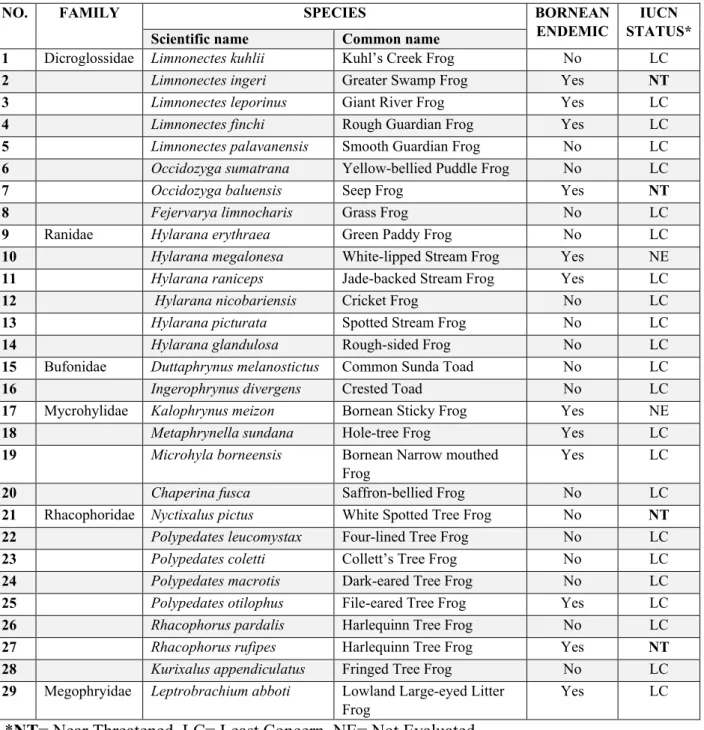
Evaluating the vegetative growth rates of Etlingera coccinea (Zingiberaceae) in smallholder agroforestry farms in Sabah,
Malaysia
Kokol, Manggatal, the monthly mean number of Tuhau stems was 391 stems in the managed plots and 306 stems in the unmanaged plots (Figure 2). Marakau, Ranau, the monthly average number of Tuhau stems was 256 stems in the managed plots and 147 stems in the unmanaged plots (Figure 3). The monthly average number of new Tuhau shoots was 30 shoots in the managed plots and 18 shoots in the unmanaged plots at Kg.
Marakau, Ranau, the monthly average number of Tuhau new shoots was 20 shoots in the managed plots and eight shoots in the non-managed plots (Figure 5). The number of Tuhau new shoots was higher in the managed plots than in the non-managed plots at both sites. Kokol, Manggatal, the ANOVA showed significant differences in the number of Tuhau shoots between the plots from July to December 2017 (p<0.05).
Marakau, Ranau, there was a significant difference in the number of Tuhau shoots (p<0.05) from May to September 2018. The vegetative growth stages of Tuhau categorized and described based on the BBCH scale (Meier 2001). Summary of the relative growth of Tuhau Length length under different types of plots at Kg.
The regression models of the growth parameters of Tuhau at both sites were significantly different (p<0.05). Management alone does not affect the growth (total length, number of leaves, RGR of length) of Tuhau. Kokol, the number of rainy days, relative humidity and rainfall amount are the important variables that affect the growth of Tuhau.
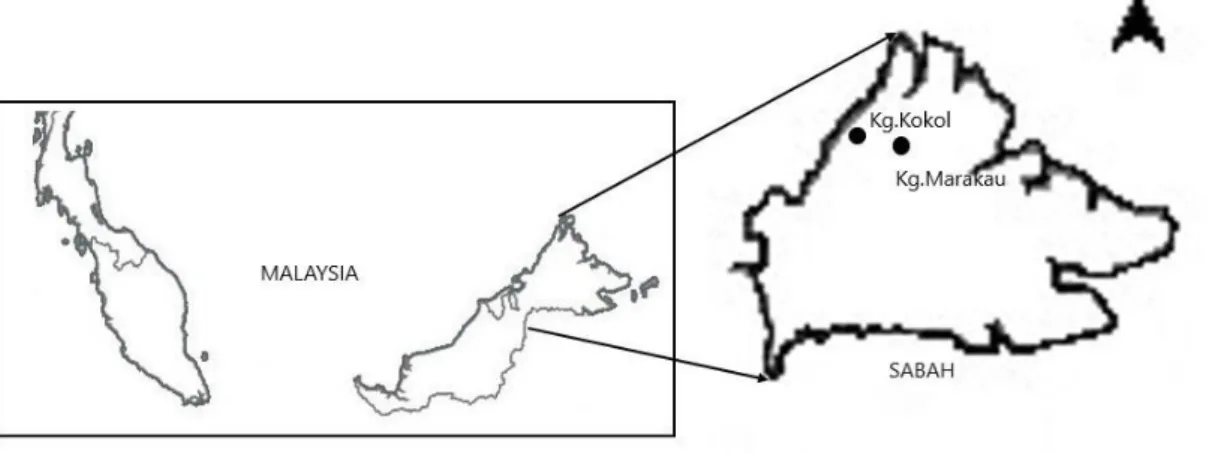
Influence of grinding method on the precision of multi-element analysis of plant materials
The location and distribution of measurements in the leaf and wood samples prepared using four reduction techniques are summarized in Table 1. A similar pattern was observed in the wood sample, except that Mg was more abundant than Ca. Given the disproportionately large scatter in the repeated measurements of Na, Al and Fe, we excluded these elements in the statistical tests.
Sample comminution using a cutting mill and a Wiley mill and passing through a 2-mm sieve yielded broadly characteristic multi-element profiles in the plant matrices (Figure 1). In the former, milling with the aid of a cutting mill led to lower recovery of the macro elements relative to Wiley mill, while the reverse was observed in the latter. It is also worth noting that there was little to no overlap in the interquartile range and 95% CL of the macroelements in each sample type.
The variability in ball-milled samples was up to 3.8-fold lower, but most of these differences were not significant (p > 0.0125), except in the wood sample ground using the Wiley mill and the corresponding ball-milled aliquot (p = 0.007). The current literature on the repeatability of ICP-OES methods for the analysis of plant samples mainly concerns medicinal plants, especially in the field of the evaluation of mineral elements of nutritional and toxicological significance. Although we did not explicitly test for statistical significance (due to the small sample size), there is a general lack of overlap in the 95% of cases.
Differences in the relative recovery of elements and variability in the repeated measurements appeared to be mutually exclusive. Although we did not analyze for particle size distribution in the Kapur and Sedaman samples, we observed that grinding using a Wiley mill resulted in coarser particles in both leaf and wood samples compared to the cutter mill. An additional test of particle size distribution was performed with leaf and wood samples from three tree species available in the laboratory (unpublished data).
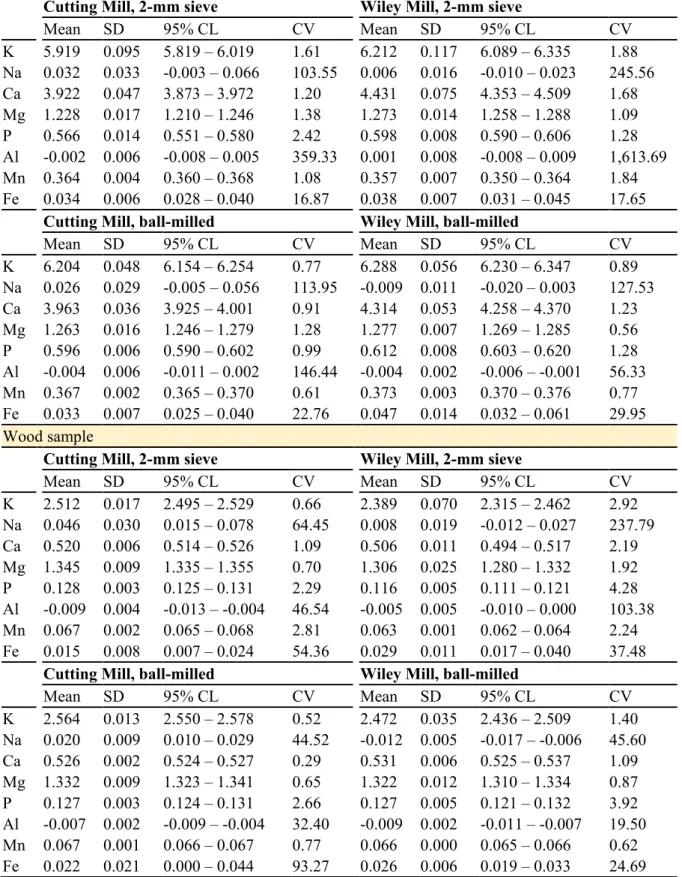
A preliminary note on phenology and animal feeding of Sterculia cordata var. montana
- Ear-spot squirrel (Callosciurus adamsi)
- Common Hill Myna (Gracula religiosa)
- Hornbills
- Leaves of Sterculia cordata var. montana with heart-shaped leaf base
- Ripen fruits of Sterculia cordata var. montana
- The bald tree with newly-produced leaves
- The tree fully flushed with leaves
- Sighting of Ear-spot squirrel (Callosciurus adamsi) after feeding on seeds
- Common Hill Myna feeding on the seeds
- A female Black Hornbill (Anthracoceros malayanus) resting on the tree
- A pair of Oriental Pied Hornbill
Other than that, seeds and fruits are the main food sources for spotted-eared squirrels, which allows them. Although information on predation of this species is unclear, other closely related species from the same family serve as prey for many carnivores, such as snakes, suggesting that this species may also play an important role in the food web of forest ecosystems (Payne et al. 1985 ). The decrease in the population is due to the high level of deforestation in the lowlands.
Food items and foraging sites of the Oriental Pied-Hornbill (Anthracoceros albirostris) during the breeding season at Sungai Panjang, Sabak Bernam, Malaysia. On a recent visit to the 'Bird Art Exhibition' at the Singapore Botanic Gardens, among the artworks on display were paintings by the late Frank Jarvis and some short notes by Chris Hails which were taken from their book 'Birds of Singapore". The exquisite and immense attention to detail of the artwork led to an immediate purchase of a copy of their book.
The authors have put great thought into weaving the story of how an island as small as Singapore can have such a diversity of species, by recounting the roles of different habitat types, climate, island location, migration patterns, etc. which, along with the late Frank Jarvis' beautiful artwork, makes you want to find out what species might be hanging out there when the next bird chirps by the window. Mangrove Rehabilitation in Sabah: The SFD-ISME Project is a follow-up to the previous publication Mangrove Rehabilitation in Sabah: The SFD-ISME Project.
In the introduction, the book provides a summary of mangroves in Sabah and an overview of phase two of the SFD-ISME project. The first book gave the readers an insight into the first phase of the mangrove project with more than 150 ha of mangrove plants which paved the way for the International Exchange Program on Coastal Resources, a collaboration between SFD and the Tropical Biosphere Research Center (TBRC). from the University of the Ryukyus in Okinawa, Japan. Looking forward to more success stories of SFD-ISME collaboration for the 3rd phase of the project.
